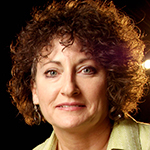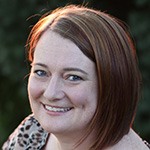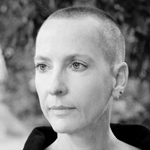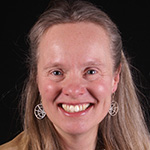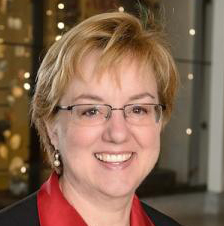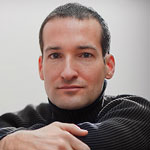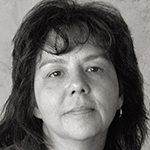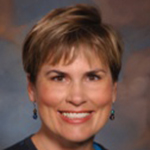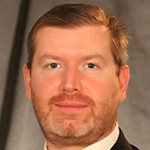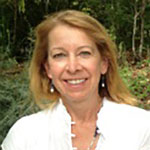The Entrepreneurial Faculty Scholars (EFS) Executive Committee can offer personal assistance to new faculty entrepreneurs at various stages of company conceptualization, start-up, funding, product launch, business development, and growth.
 |
Jim Agutter, Architecture & Planning (801-581-8779, agutterja@arch.utah.edu): Jim Agutter is the Director of the Design Program, an Assistant Professor of Design in the College of Architecture + Planning and Director of Spark Healthcare Innovation Lab. His work has focused on using design and design thinking principles to address challenges across a broad range of disciplines. In addition, he has researched the application of 2D and 3D visual design concepts to large scale, real-time data environments. He is the co-founder of two University of Utah spin-offs, Applied Medical Visualizations and Intellivis and has 8 patents. He was awarded the 2005 Creative Achievement Award with Julio Bermudez by the Association of College Schools of Architecture and the 2009 University of Utah Honors Professorship.
|
 |
Balamurali K. Ambati, Moran Eye Center (801-581-3023, bala.ambati@utah.edu): Dr. Bala Ambati, MD, PhD, MBA, is a cornea specialist with a research focus in angiogenesis. Splitting his time equally between clinic and research, his most significant basic science research advances have been the identification of sFlt-1 as the prime mediator of corneal avascularity (published in Nature and recognized by Science as a Signaling Breakthrough of the Year) and the development of Flt-1 intraceptors as a novel intracellular anti-VEGF therapy, of significant impact as current anti-VEGF agents work only extracellularly. Clinically, Dr. Ambati was the first to describe use of bevacizumab (Avastin) to treat corneal transplant rejection. He has developed key surgical innovations including the technique of posterior endothelial rotational lamellar keratoplasty (PERL-K) as a non-transplant treatment for Fuchs dystrophy, a D-shaped ultrasound tip enabling carousel technique within the lens capsular bag, and a novel DSEK forceps. Dr. Ambati has also been recognized for his teaching excellence by a University of Utah Resident Research Mentor Award and by serving as an Instructor at the Harvard Cataract Course for 2009 and 2010.
|
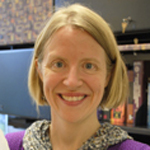 |
Stacy Morris Bamberg, Department of Mechanical Engineering (801-581-6441, sjm.bamberg@utah.edu): Stacy Bamberg is an Associate Professor of Mechanical Engineering. Her research focus is on the design of sensors and instrumentation to allow people to evaluate their own physiological conditions away from a clinical environment. She is founder of Veristride, a University of Utah spinout that is focused on her work on gait and movement analysis and feedback using an instrumented insole and phone app. Veristride was awarded an honorable mention for medical device design from the Utah Innovation Awards in 2010. She has focused on gait and movement analysis for more than a decade, and was an invited speaker at the 7th Annual Intl. Conference on Ubiquitous Healthcare in Jeju, South Korea, in 2010. She is also a senior member of the IEEE.
|
 |
Grzegorz (Greg) Bulaj, Department of Medicinal Chemistry (801-581-7063, bulaj@pharm.utah.edu): Dr. Grzegorz Bulaj is an Associate Professor of Medicinal Chemistry in the College of Pharmacy since 2006, and a Research Assistant Professor in the Department of Biology since 1998; Senior Scientist and Director of Peptide Chemistry in Cognetix, Inc., (1999-2005) involved in many stages of drug development from discovery, through preclinical to clinical studies; Co-founder and Advisor, NeuroAdjuvants, Inc. in Salt Lake City (2006-present). Inventor and co-inventor on several patent applications. Over the last few years, Dr. Bulaj has been serving as a consultant for small biotech companies that specialize in peptide-based therapeutics.
|
 |
Craig Caldwell, Fine Arts, Department of Fim and Media Arts (801-581-5127, craig.caldwell@utah.edu): Craig Caldwell, USTAR Professor, Entertainment Arts and Engineering. Industry experience: 3D Technology Specialist, Walt Disney Feature Animation in Burbank, CA and Creative Training at Electronic Arts, Tiburon Studio. Academic background includes Head of the largest Film School in Australia at Griffith University. Previously was Head of the Media Arts Department, University of Arizona. Currently Director of Arts Track, Master Games Studio. Presented at conferences such as SIGGRAPH Asia 2012, Pixel 7, View Conference, and Mundos Digitales.
|
 |
Dale Clayton, Department of Biology (801-581-6482, clayton@biology.utah.edu): Dr. Dale H. Clayton is Professor of Biology in the College of Science. He received an M.S. in entomology at the University of Minnesota (1983) and a Ph.D. in evolutionary biology at the University of Chicago (1989). From 2004-2008 he was Director of the Center for Alternate Strategies of Parasite Removal (CASPeR) at the University of Utah. He is lead inventor of the LouseBuster™, a patented medical device that uses warm air to kill head lice on children and adults. Clayton is co-founder and CSO of Larada Sciences Inc., a university spinoff company founded in 2006 to market the LouseBuster™. The device is currently being used in more than 20 countries. Clayton is a frequent guest lecturer around the world and has published two books and numerous journal articles and book chapters. In 2008 he was awarded the American Society of Parasitologists' highest honor, the Ward Medal.
|
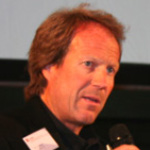 |
David W. Grainger, Department of Pharmaceutical Chemistry (801-581-371, david.grainger@utah.edu): David W. Grainger is the George S. and Dolores Doré Eccles Presidential Endowed Chair in Pharmaceutics and Pharmaceutical Chemistry, Chair, Department of Pharmaceutics and Pharmaceutical Chemistry, and Professor of Bioengineering at University of Utah. Grainger's expertise is focused on improving implanted medical device performance, drug delivery of therapeutic proteins and live vaccines, nanomaterials interactions with human tissues, and innovating diagnostic devices based on DNA and protein biomarker capture. Grainger has >130 full research publications, organized 21 international scientific symposia, presented over 130 invited plenary symposia lectures, and several hundred other invited talks all over the world. Grainger has helped found three medical device companies, and sits on Scientific Advisory boards for 4 biomedical companies, and actively consults internationally with industries in applications of materials in biotechnologies and medicine.
|

|
Robert W. Hitchcock, Department of Bioengineering (801-585-7741, r.hitchcock@utah.edu): Dr. Robert W. Hitchcock, Assistant Professor of Bioengineering, director of Utah BioDesign and director of the Bioengineering Industrial Advisory Board. Bob joined the University of Utah's Bioengineering faculty in 2006 to expand the department's initiatives in medical device design education and innovation. He has over 25 years experience in bringing new products to the marketplace. He is a co-founder of Catheter Connections, Inc.(2008), a former VP of R&D for Sorenson Medical (2002 – 2006), former COO of iSense (2001) and scientific advisory board member for Photokinetics, Inc. (Ogden, UT), MR Board, Inc. (Salt Lake City, UT), Blackrock Technology (Salt Lake City, UT) and SMD, Inc. (Wallingford, CT). Research interests of Dr. Hitchcock's group include implantable sensors, antimicrobial devices for infusion therapy and cardiac tissue engineering.
|
 |
Chris Johnson, Scientific Computing and Imaging Institute (801-581-7705, crj@sci.utah.edu): Johnson directs the Scientific Computing and Imaging Institute at the University of Utah where he is a Distinguished Professor of Computer Science and holds faculty appointments in the Departments of Physics and Bioengineering. His research interests are in the areas of scientific computing and scientific visualization. Dr. Johnson founded the SCI research group in 1992, which has since grown to become the prominent SCI Institute which has spawned three start-up companies: Visual Influence, which recently merged with Numira Biosciences, VisTrails Inc., and RayScale Inc.
|
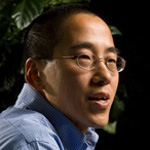 |
Dean Li, Molecular Medicine Program (801-585-0727, dean.li@u2m2.utah.edu: Dean Li, MD, PhD is the HA and Edna Benning Endowed Professor of Medicine and Cardiology. He was the Director of the Vascular Biotherapeutics Center of Excellence at the University of Utah. This Center of Excellence has spun off two companies. The first, Hydra Biosciences, is located in Cambridge, MA, and was co-founded by Dr. Li in 2001. Dr. Li served as CSO until late 2003 and returned to the University full time in 2004, following successful completion of two rounds of financing amounting to 28 million dollars. The second, Navigen, is located in Salt Lake City and was established in 2006. Dr. Li is currently the founding CSO of Navigen. This company is commercializing new medicines for stabilizing vessels in the treatment of vascular eye diseases, acute lung injury and other inflammatory/ischemic diseases.
|
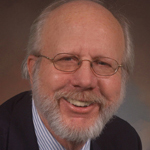 |
Richard Normann, Ophthalmology and Visual Sciences (801-581-7645, normann@utah.edu): Dr. Richard A. Normann, Distinguished Professor of Bioengineering and Ophthalmology, is the director of the Center for Neural Interfaces, a Utah State Center of Excellence (1995-2000). He was co-founder of Bionic Technologies, Inc (1995-2002), a company focused on the sale of tools for recording and stimulation of large populations of neurons in the central and peripheral nervous systems. In 2002, this company was acquired by Cyberkinetics Neurotechnologies, Inc. (Foxborough, MA). Cyberkinetics was acquired in 2008 by Blackrock Microsystems which has continued the development of research and clinical applications of the Utah Electrode Array technologies.
|
 |
Florian Solzbacher, Department of Electrical and Computer Engineering (801-581-7408, solzbach@ece.utah.edu): Prof. Solzbacher is Executive Director of the Utah Nanofabrication Laboratory, Co-Director of the Utah Nanotechnology Institute, President and Executive Chairman of Blackrock Microsystems and of Blackrock Neuromed and is a Professor in Electrical and Computer Engineering with adjunct appointments in Materials Science and Bioengineering at the University of Utah. His research focuses on harsh environment microsystems and materials, including implantable, wireless microsystems for biomedical and healthcare applications, and on high temperature and harsh environment compatible micro sensors. Prof. Solzbacher received his M.Sc. EE from the Technical University Berlin in 1997 and his Ph.D. from the Technical University Ilmenau in 2003. He is co-founder of several companies such as Blackrock Microsystems, Blackrock Neuromed, and First Sensor Technology. He was a board member and Chairman of the German Association for Sensor Technology AMA and of Sensor + Test trade show and conference from 2001 until 2009, and serves on a number of company and public private partnership advisory boards and international conference steering committees such as the NIH/NINDS Neural Interfaces Conference. He is author of over 190 journal and conference publications, 5 book chapters and 16 pending patents.
|
 |
Ron Weiss, Department of Pathology (801-584-5188, weissrl@aruplab.com): Ronald Weiss is professor of Pathology in the University of Utah's School of Medicine, and has an active clinical practice in hematopathology. Until July 1, 2010, Dr Weiss held a variety of executive management positions in the University's ARUP Laboratories, including six years as President & Chief Operating Officer. ARUP is a private enterprise of the University which provides medical laboratory services to hundreds hospital and independent laboratories around the country. He received his MD degree from Creighton University (1980) and his M.B.A. from the University of Utah (1989). Dr. Weiss' interests also include health policy and laboratory management, areas in which he both writes and speaks nationally.
|
 |
Charles A. Wight, Department of Chemistry (cwight@weber.edu): Chuck Wight is Professor of Chemistry and Dean of the Graduate School at the University of Utah. Wight's research is focused on the chemistry of high explosives and rocket propellants. In collaboration with the Center for Simulation of Accidental Fires and Explosions, Chuck and his students write software for simulating explosions and detonations on massively parallel computer platforms. This research is aimed at developing the predictive capability of peta-scale computer simulations. The overarching goal is to improve the safety of manufacture, storage and transportation of energetic materials. Chuck is co-author of over 150 journal articles, 2 books, and 1 patent. He is a co-founder of RUReady, a web-based learning tool for developmental math education, which formed the basis of a recent University of Utah startup company. Chuck is also the founder and chief software architect of ChemVantage.org, an Open Education Resource for supporting teaching, learning and student success in college-level General Chemistry courses. Chuck retired from the EFS Executive Committee when he began his new role as President of Weber State University on Jan. 1, 2013.
|
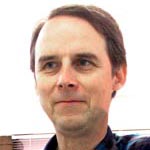 |
Carl Wittwer, School of Medicine (801-581-4737, carl.wittwer@path.utah.edu):Carl Wittwer, M.D., Ph.D. is a Professor of Pathology at the University of Utah Medical School with over 180 publications that focus on technique and instrument development in molecular diagnostics. He is also a technical vice president and medical director of the clinical laboratory, ARUP, where he initiated molecular diagnostics during the 1990s. In addition, he is Chief Science Officer of Idaho Technology, a company he co-founded in 1990 that now employs over 250 people that is located within the University of Utah Research Park. Dr. Wittwer holds 26 US patents and their foreign equivalents and is the primary inventor of the LightCycler® real-time PCR system with over 8,000 units placed worldwide by Roche. He received small business innovation awards in 1999 and 2002, the State of Utah Governor's Medal for Science and Technology in 2003 and the AMP award for excellence in molecular diagnostics in 2008. He current focus is high-resolution DNA melting of PCR products for genotyping, mutation scanning, and sequence identity. Learn more at www.dna.utah.edu.
|

